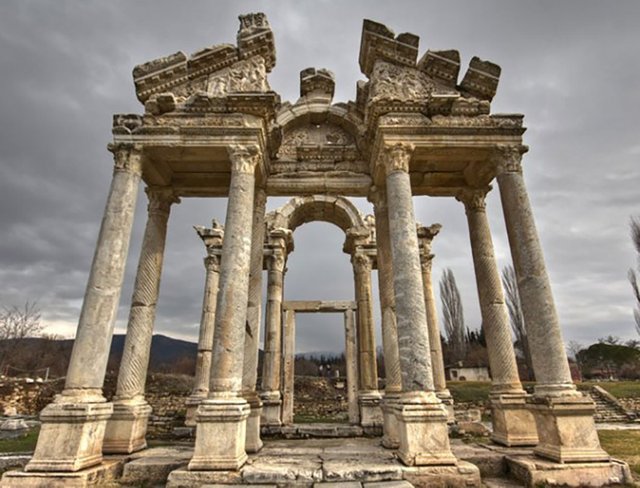The ancient city of Aphrodite, the goddess of love - Aphrodisias #6
The geological nature of the area meant that the city was hit by numerous earthquakes. Some from the earlier imperial period, about which we are either aware of ancient historians or inscriptions, may have been difficult, but their traces are no longer noticeable because of successful restoration of the remaining buildings. Such natural catastrophes of the 4th century and later are more likely to be detected. For example, Aphrodisias in the fifties and sixties of the fourth century, as well as near Ephesus, hit by heavy earthquakes.
The worst consequence of these catastrophes was the rise of the groundwater level, damaging much of the canals that supplied the city with water from the eastern slopes of the mountain. The result was flooding in the lower areas. A number of the damaged buildings were repaired in the 5th century, along with attempts to prevent further flooding. Later earthquakes magnified the problems, especially a particularly catastrophic one during the reign of Emperor Heraclius (610-641). Much of the damage visible to several buildings was never repaired, and where once handsome buildings stood, only ruins remained.
Like many cities of the late Roman and Byzantine empires, Aphrodisias was able to maintain its importance until the 7th century. But invasions from the East, religious disputes, political and economic difficulties and epidemics accelerated the decline of the city. The city never recovered from the earthquakes mentioned above. The belt of fortifications, which was mainly placed in the 4th century around the then inhabited urban area, could neither be restored nor defended. Instead, the acropolis (formerly known as the hikkh) was turned into a fortress, as the hill gave an excellent overview of the neighboring area. Little is known about the history of Aphrodisias-Karia after the 7th century. In various ecclesiastical documents names of bishops are found.
A short flowering in the 11th century can be tapped from archaeological finds. But the arrival and eventual rule of the Seljuk Turks in Anatolia and its western fringes between the 11th and 13th centuries meant the demise of most of the remaining urban settlements. We know from Byzantine sources at least four conquests of Karia Aphrodisias in the 12th and 13th centuries. After that, the whole area was part of the reign (beylik) Aydın-Mentese Aphrodisias was abandoned, but in the 15th or 16th century, the fertile plain was re-populated, and finally the Turkish village of Geyre was built on the ruins of the once glorious city Zoilos frieze in Aphrodisias museum


içeriğin türkçe cevirisinide paylaşımınıza katarsanız ingilizce bilmeyenler için fayda sağlamış olursunuz, bol kazançlar
haklisin @propofol ama bu hesap basladigi günden bu yana hep inglizce icerik paylasti ve bunun nedenide türkiyeyi ve kültür zenginligini baska topluluklara tanitmak.
saygilarimla
türkiyede yaşayıpta türkiyedeki kültür zenginliğinin farkında olmayanlar var :) ondan ötürü böyle bi yorum yapma gereği duydum :)